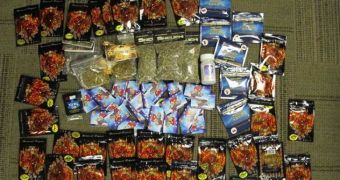The number of new synthetic drugs is growing at an alarming pace and their increasing popularity leads to serious public health problems, according to a new report by the United Nations Office on Drugs and Crime (UNODC).
The report indicates that nearly 350 varieties of legal highs have been identified by drug experts since 2008, including 97 in the past year alone. These designer drugs, as they are also called, are a particular cause for concern because in many states they are legal and are freely marketed on the Internet though they are not under international control and have not been tested for safety.
The UN special report, called Global Synthetic Drugs Assessment, also mentions that 28 percent of the new drugs are synthetic cannabinoids and mimic the effects of marijuana, while 25 percent are synthetic cathinones, which are known as “bath salts” and have the same effects as amphetamines.
Designer drugs that imitated the effects of cannabis were the most popular, as their number soared from 60 in mid-2012 to 110 in 2013.
“There is a dynamic and unprecedented global expansion of the synthetic drugs market both in scope and variety,” Jean-Luc Lemahieu, director for policy analysis and public affairs at UNODC, was cited as saying by the Huffington Post.
“New substances are quickly created and marketed, challenging law enforcement efforts to keep up with the traffickers and curb public health risks,” he added.
In this latest analysis, the UNODC warns that evidence from almost all regions show that the use of new psychoactive substances among young people is growing at a frightening rate, as the apparently harmless names of the designer drugs (“spice,” “bath salts”) leads them to believe they are low-risk fun.
The biggest problem with these new substances is that nobody really knows what chemicals are being used to produce them, so when consumers have severe health issues caused by drugs, doctors are left unable to treat them as they don’t actually know what they have taken.
“Emergency services may therefore find themselves unable to identify life-threatening substances and powerless to administer the proper treatment to users,” the UN report added.
Apparently, in parts of Central and South America, amphetamine-type substances were more popular than cannabis or cocaine among some age groups, while in North America and Europe, the use of certain legal highs was more widespread than traditional illicit drugs.
The United Kingdom is the only country that has formally asked for a global ban on mephedrone, and the UNODC said usage data for the country show that the controls may have led to a decline in the mephedrone market.

 14 DAY TRIAL //
14 DAY TRIAL //